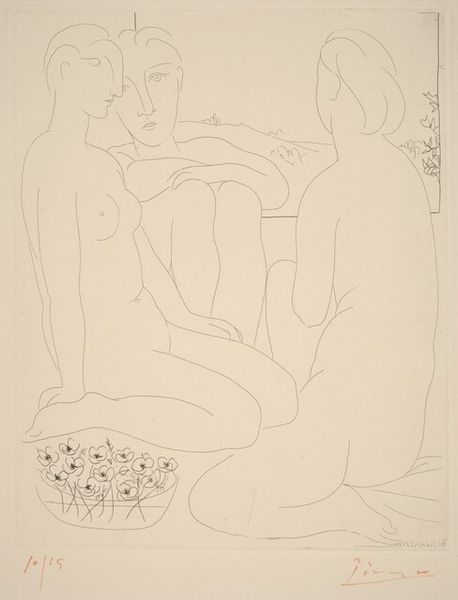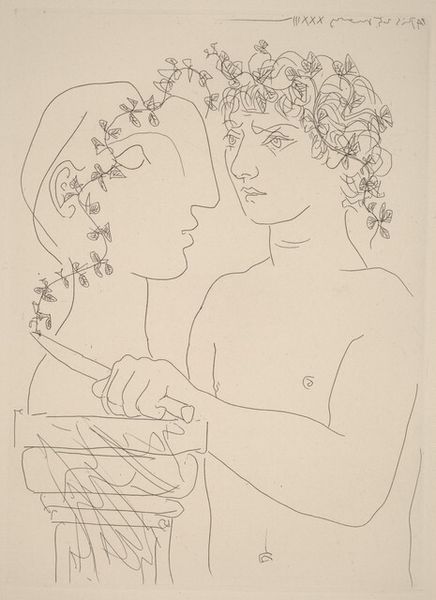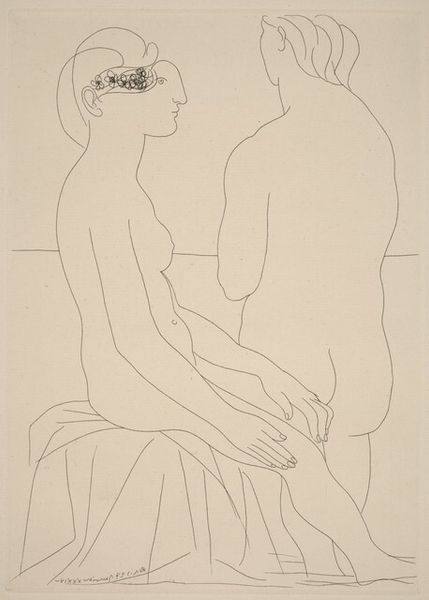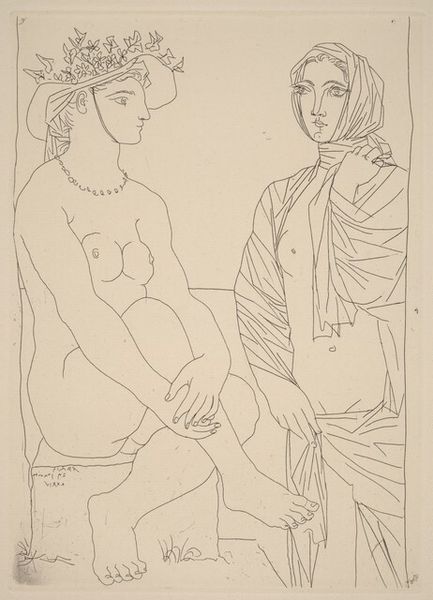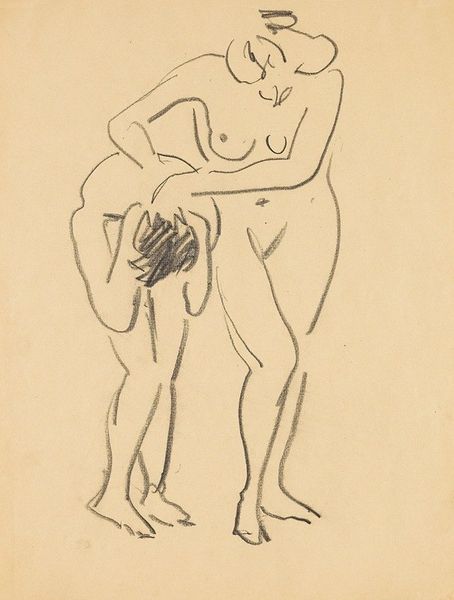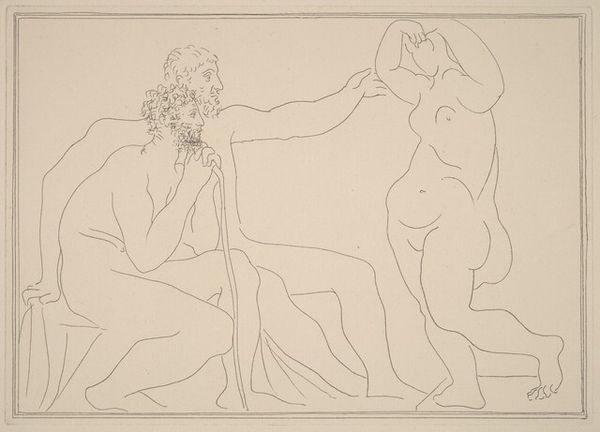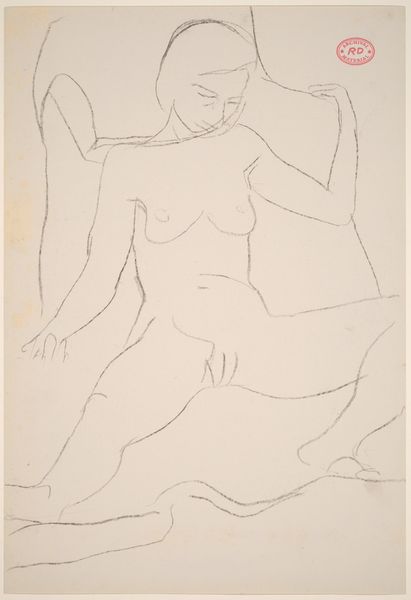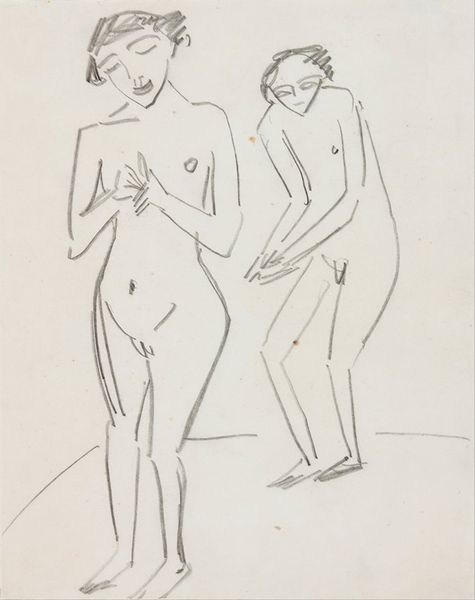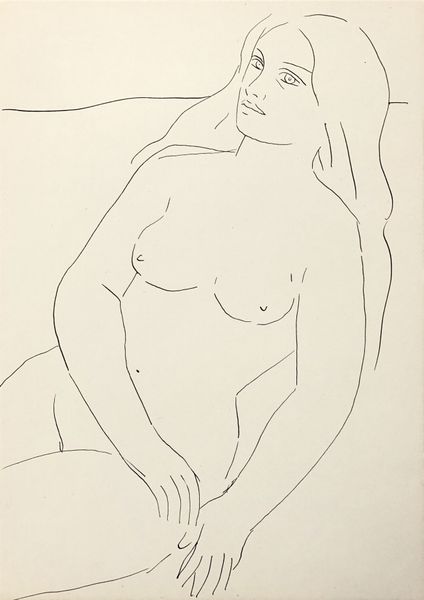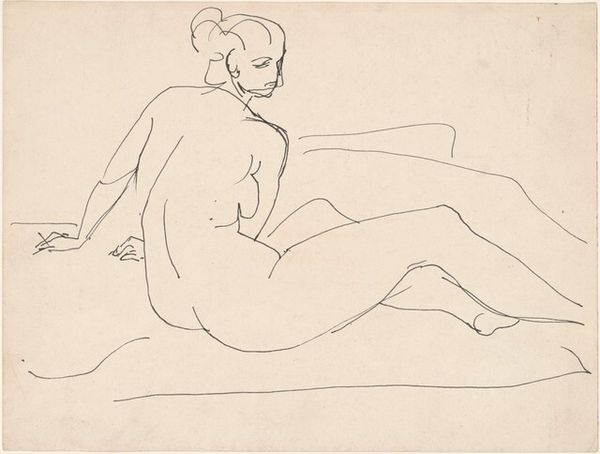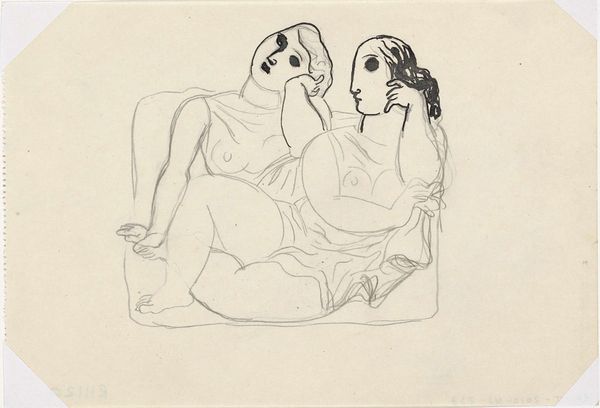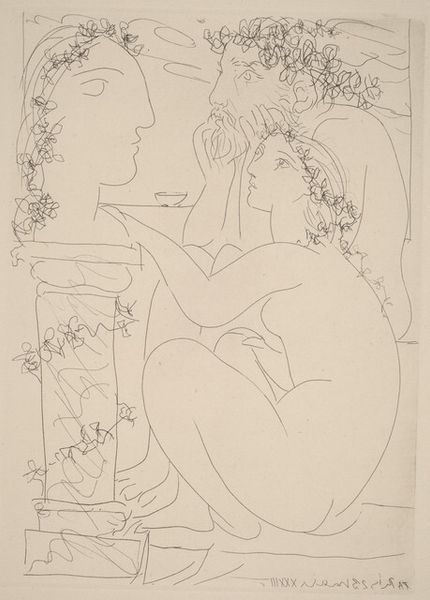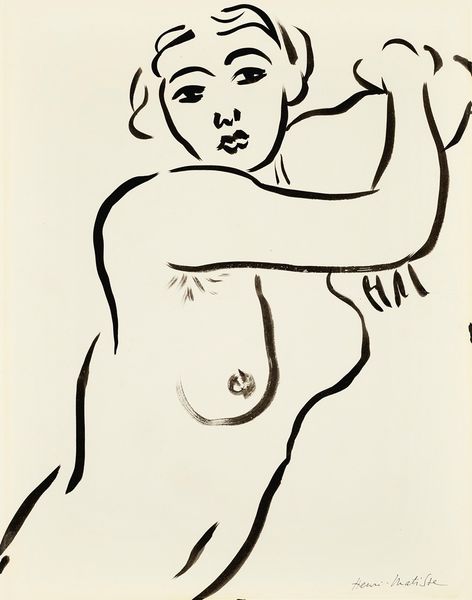
Young Bacchus with a Tambourine, with a Bacchante (Jeune Bacchus au tambourin, avec un Bacchante) 1934
0:00
0:00
print, etching
#
ink drawing
# print
#
etching
#
caricature
#
classical-realism
#
figuration
#
line
#
history-painting
#
nude
#
modernism
Copyright: National Gallery of Art: CC0 1.0
Curator: Let’s take a look at "Young Bacchus with a Tambourine, with a Bacchante," an etching by Pablo Picasso from 1934. What are your initial impressions? Editor: Well, there’s something inherently fragile about it. The spidery lines create a sense of lightness, almost as if the figures might dissipate if you look at them too directly. A really raw, gestural approach to a classical subject. Curator: The seeming simplicity of the lines belies a more complex history. Picasso, especially in the 30s, was revisiting classical themes, often engaging with historical techniques, like etching, a medium requiring careful labor and specific material knowledge. We often forget about that manual labor, how the lines of the copper plate come to life with pressure and acid. Editor: Exactly. Thinking formally, note the composition: the arrangement of the figures, the boy with his tambourine and the bacchante, has an immediate sense of visual balance. The dynamism achieved through such stark lines creates real power and tension in this tableau, all flowing linear connections, but not in a hyper-realistic manner. It recalls ancient vase painting, while it’s very, very modern at the same time. Curator: And that tension you note plays out further when we think about it in the social context of Picasso’s personal life at this moment. It was the moment when his relationship with Marie-Thérèse Walter began. We can view the figure on the right perhaps as a portrayal of her youth and vitality and the other as her companion, but also what of the role of Picasso himself as the maker? He’s in the game, setting up his subjects, manipulating them within the art production industry. Editor: Absolutely. This is so engaging, these intertwining lines seem simple but reveal hidden emotions. This really pushes the potential of printmaking to express very subtle details. Curator: Indeed. Etching allowed for the production of multiples, which made art accessible to wider audiences than perhaps a single painting. A key material factor there! Thanks for sharing your insight! Editor: Thank you! The conversation only deepened my appreciation of Picasso’s skill and artistry with the formal components on display here.
Comments
No comments
Be the first to comment and join the conversation on the ultimate creative platform.
